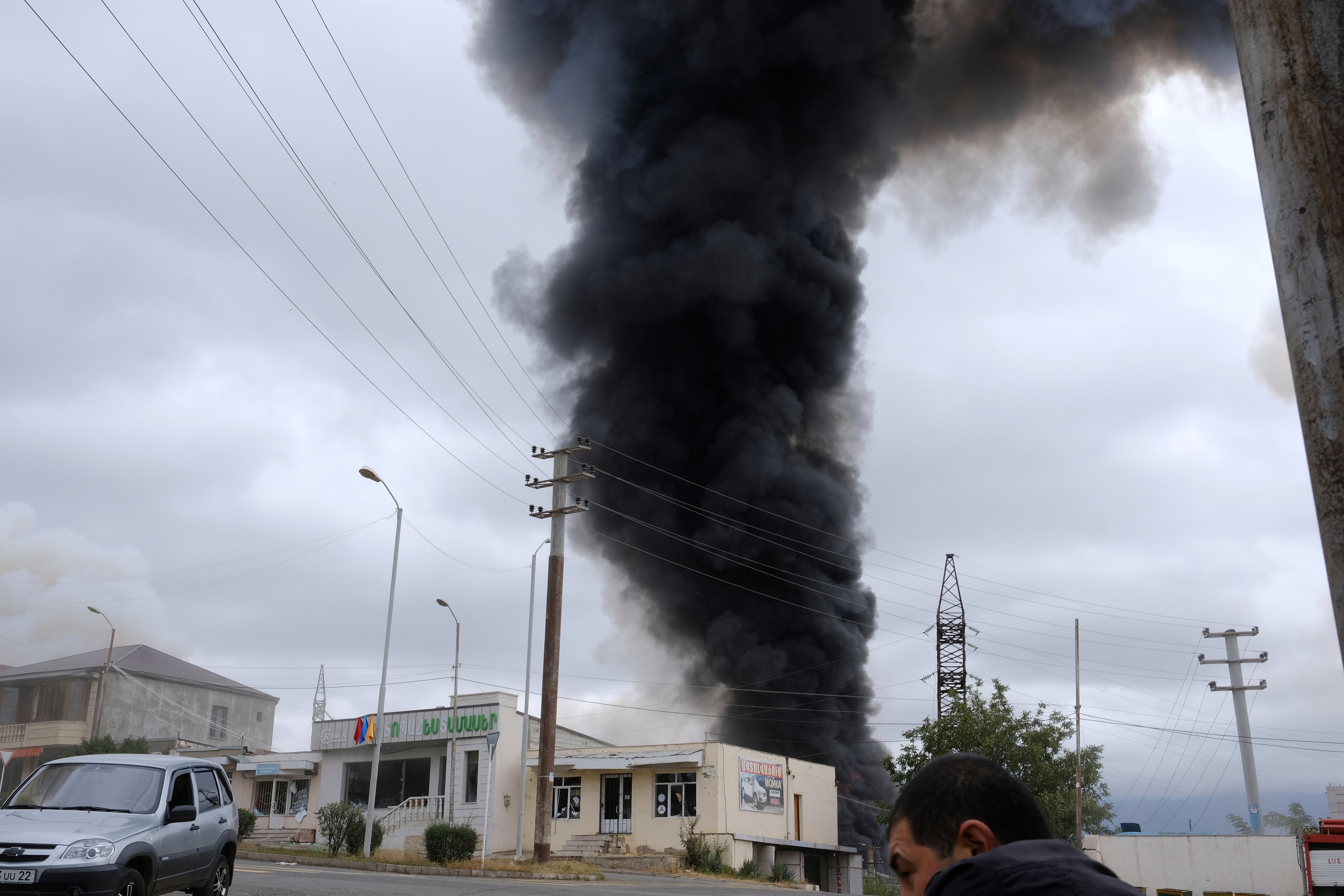Nagorno-Karabakh: Armenia and Azerbaijan clashes resume as both sides accuse each other of rocket attacks
The fighting between Armenian and Azerbaijani forces over the separatist territory of Nagorno-Karabakh resumed on Monday morning, with both sides accusing each other of launching attacks

Your support helps us to tell the story
From reproductive rights to climate change to Big Tech, The Independent is on the ground when the story is developing. Whether it's investigating the financials of Elon Musk's pro-Trump PAC or producing our latest documentary, 'The A Word', which shines a light on the American women fighting for reproductive rights, we know how important it is to parse out the facts from the messaging.
At such a critical moment in US history, we need reporters on the ground. Your donation allows us to keep sending journalists to speak to both sides of the story.
The Independent is trusted by Americans across the entire political spectrum. And unlike many other quality news outlets, we choose not to lock Americans out of our reporting and analysis with paywalls. We believe quality journalism should be available to everyone, paid for by those who can afford it.
Your support makes all the difference.The fighting between Armenian and Azerbaijani forces over the separatist territory of Nagorno-Karabakh resumed on Monday morning, with both sides accusing each other of launching attacks.
Armenian military officials on Monday reported missile strikes hitting Stepanakert, the capital of Nagorno-Karabakh. The region lies in Azerbaijan but has been under the control of ethnic Armenian forces backed by Armenia since the end of a separatist war in 1994.
Firefights “of various intensity ... continue to rage" in the conflict zone, Armenian Defense Ministry spokeswoman Shushan Stepanian said on Facebook.
The Azerbaijani Defense Ministry, in turn, accused Armenian forces of shelling the towns of Tartar, Barda and Beylagan. Ganja, Azerbaijan's second largest city far outside of the conflict zone, is also “under fire,” officials said.
The fighting erupted on Sept. 27 and has killed dozens, marking the biggest escalation in the decades-old conflict over the region. Both sides have accused each other of expanding the hostilities beyond the conflict zone in Nagorno-Karabakh.
Nagorno-Karabakh officials have said nearly 200 servicemen on their side have died in the clashes so far. Eighteen civilians have been killed and more than 90 others wounded. Azerbaijani authorities haven’t given details on their military casualties, but said 24 civilians were killed and 121 others were wounded.
Nagorno-Karabakh was a designated autonomous region within Azerbaijan during the Soviet era. It claimed independence from Azerbaijan in 1991, about three months before the Soviet Union’s collapse. A full-scale war that broke out in 1992 killed an estimated 30,000 people.
By the time the war ended in 1994, Armenian forces not only held Nagorno-Karabakh itself but substantial areas outside the territory’s formal borders.
Azerbaijani President Ilham Aliyev has repeatedly said that Armenia’s withdrawal from Nagorno-Karabakh is the sole condition to end the fighting.
Armenian officials allege that Turkey is involved in the conflict and is sending fighters from Syria to the region. Armenian Prime Minister Nikol Pashinian said earlier this week that “a cease-fire can be established only if Turkey is removed from the South Caucasus.”
Ankara has denied sending arms or foreign fighters, while publicly siding with Azerbaijan in the dispute.